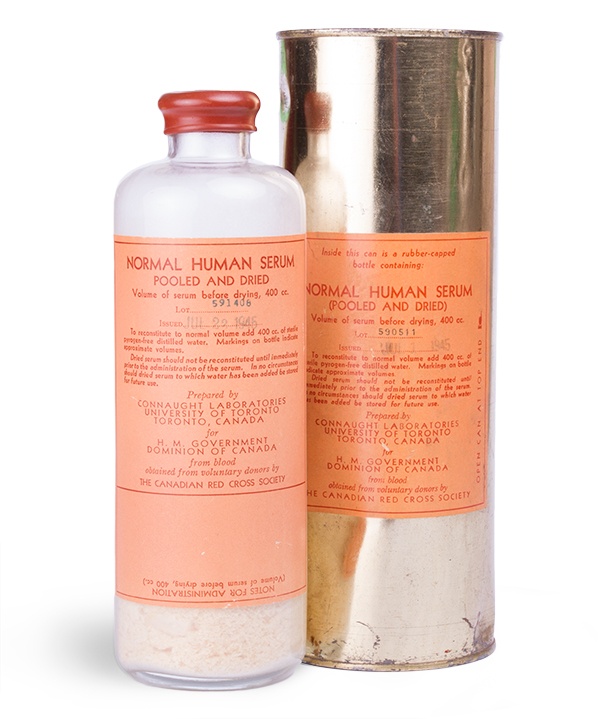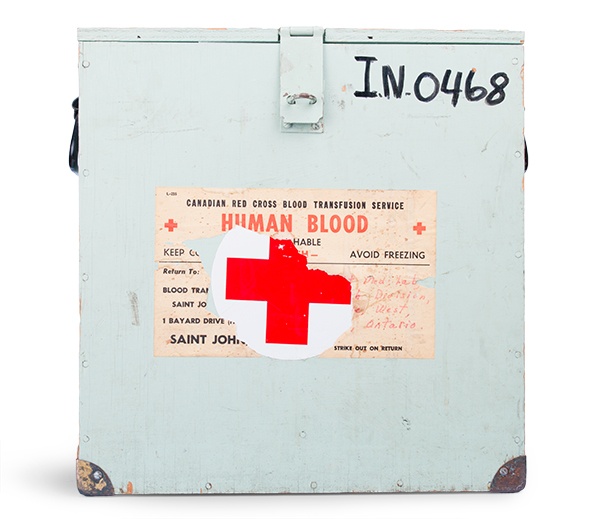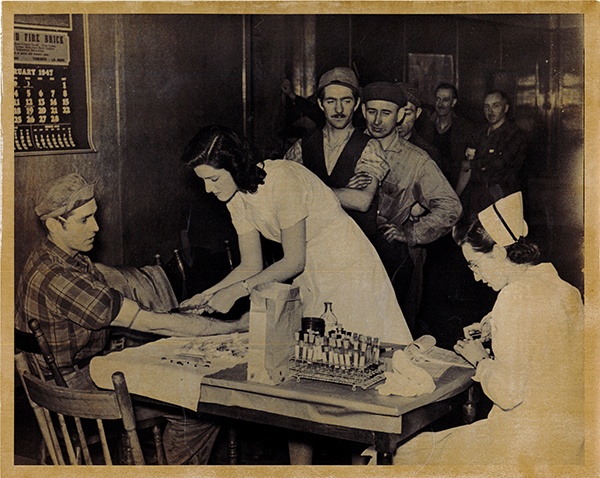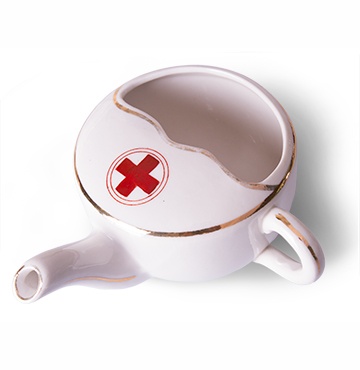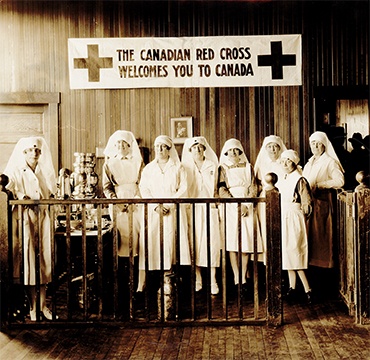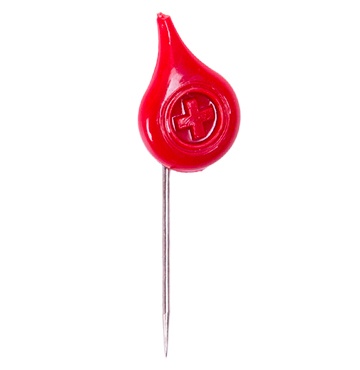Human Serum Bottles
During the Second World War (1939-45) the Canadian Red Cross collected civilian blood for military use through its wartime Blood Donor Service. Canadian blood made its way to the battlefronts in the form of dried plasma serum, as seen here, and reconstituted into liquid form on-site. Plasma like this bottle -- sealed on July 25, 1945 -- helped save tens of thousands of lives.
During the First World War (1914-18) and ensuing decades of the 1920s and ‘30s, blood transfusion therapy advanced from a basic arm-to-arm procedure with a high failure rate, to an understanding of blood types and their (in-)compatibility, and the creation of small hospital blood banks. As war in Europe loomed in the late 1930s, scientists in many countries began experimenting with ways to preserve blood beyond its short natural shelf-life of two weeks. War-wounded military personnel would benefit from blood transfusions, but the blood had to last long enough to reach them.
In Canada, Dr. Charles Best (famous for his role in developing insulin) and colleagues at the Connaught Laboratories in Toronto developed a method of separating the components of whole blood and separating the plasm in a dried form that lasted much longer. After it was shipped overseas to the battlefronts, the plasma could be reconstituted by medical personnel simply by adding sterile distilled water, then administered to the patient.
“Help Red Cross maintain the life line.”
The Canadian government asked the Red Cross to add blood collection to its many wartime activities, reasoning that the society’s many volunteers and positive reputation could make the program a success. This proved to be the case, and Canadians added the gift of blood to the time, money, and skills they were already donating to the wartime Red Cross. Doctors and nurses donated their time for free to run local blood clinics.
During 1944, the year the Allies (including Canada) invaded Europe and began the big push to defeat Germany, Canadians on the homefront` donated more than a million pints of blood. Blood donor appeals that asked Canadians to “help Red Cross maintain the life line” were not exaggerating. Few forms of wartime volunteer work offered such a clear, tangible opportunity to save lives.
During the Second World War (1939-45) the Canadian Red Cross collected civilian blood for military use through its wartime Blood Donor Service. Canadian blood made its way to the battlefronts in the form of dried plasma serum, as seen here, and reconstituted into liquid form on-site. Plasma like this bottle -- sealed on July 25, 1945 -- helped save tens of thousands of lives.
During the First World War (1914-18) and ensuing decades of the 1920s and ‘30s, blood transfusion therapy advanced from a basic arm-to-arm procedure with a high failure rate, to an understanding of blood types and their (in-)compatibility, and the creation of small hospital blood banks. As war in Europe loomed in the late 1930s, scientists in many countries began experimenting with ways to preserve blood beyond its short natural shelf-life of two weeks. War-wounded military personnel would benefit from blood transfusions, but the blood had to last long enough to reach them.
In Canada, Dr. Charles Best (famous for his role in developing insulin) and colleagues at the Connaught Laboratories in Toronto developed a method of separating the components of whole blood and separating the plasm in a dried form that lasted much longer. After it was shipped overseas to the battlefronts, the plasma could be reconstituted by medical personnel simply by adding sterile distilled water, then administered to the patient.
“Help Red Cross maintain the life line.”
The Canadian government asked the Red Cross to add blood collection to its many wartime activities, reasoning that the society’s many volunteers and positive reputation could make the program a success. This proved to be the case, and Canadians added the gift of blood to the time, money, and skills they were already donating to the wartime Red Cross. Doctors and nurses donated their time for free to run local blood clinics.
During 1944, the year the Allies (including Canada) invaded Europe and began the big push to defeat Germany, Canadians on the homefront` donated more than a million pints of blood. Blood donor appeals that asked Canadians to “help Red Cross maintain the life line” were not exaggerating. Few forms of wartime volunteer work offered such a clear, tangible opportunity to save lives.

